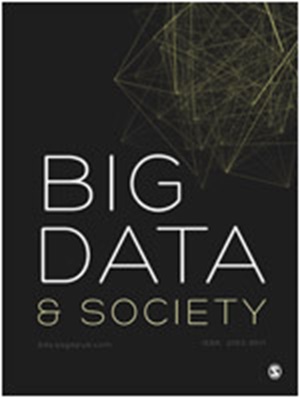预测性隐私:人工智能和大数据背景下的集体数据保护
IF 5.9
1区 社会学
Q1 SOCIAL SCIENCES, INTERDISCIPLINARY
引用次数: 2
摘要
大数据和人工智能对数据保护提出了新的挑战,因为这些技术可以根据许多人的匿名数据对第三方进行预测。预测信息的例子包括购买力、性别、年龄、健康、性取向、种族等。“预测分析”应用的基础是将相关个人的行为数据(如使用、跟踪或活动数据)与使用机器学习模型或更简单的统计方法可能匿名处理的许多其他人的数据进行比较。文章首先指出,预测分析有被滥用的巨大潜力,表现为社会不平等、歧视和排斥。这些潜力不受欧盟现行数据保护法的监管;事实上,匿名海量数据的使用在很大程度上是不受监管的。在“预测隐私”一词下,提出了一种数据保护方法,以应对滥用预测分析的风险。当一个人的个人信息在他们不知情的情况下,违背他们的意愿,根据许多其他人的数据进行预测时,他的预测隐私就会受到侵犯。然后,预测隐私被制定为受保护的商品,并提出了关于预测分析监管的数据保护改进方案。最后,文章指出,预测分析背景下的数据保护目标是对“预测力”的监管,这是平台公司与社会之间信息权力不对称的新表现。本文章由计算机程序翻译,如有差异,请以英文原文为准。
Predictive privacy: Collective data protection in the context of artificial intelligence and big data
Big data and artificial intelligence pose a new challenge for data protection as these techniques allow predictions to be made about third parties based on the anonymous data of many people. Examples of predicted information include purchasing power, gender, age, health, sexual orientation, ethnicity, etc. The basis for such applications of “predictive analytics” is the comparison between behavioral data (e.g. usage, tracking, or activity data) of the individual in question and the potentially anonymously processed data of many others using machine learning models or simpler statistical methods. The article starts by noting that predictive analytics has a significant potential to be abused, which manifests itself in the form of social inequality, discrimination, and exclusion. These potentials are not regulated by current data protection law in the EU; indeed, the use of anonymized mass data takes place in a largely unregulated space. Under the term “predictive privacy,” a data protection approach is presented that counters the risks of abuse of predictive analytics. A person's predictive privacy is violated when personal information about them is predicted without their knowledge and against their will based on the data of many other people. Predictive privacy is then formulated as a protected good and improvements to data protection with regard to the regulation of predictive analytics are proposed. Finally, the article points out that the goal of data protection in the context of predictive analytics is the regulation of “prediction power,” which is a new manifestation of informational power asymmetry between platform companies and society.
求助全文
通过发布文献求助,成功后即可免费获取论文全文。
去求助
来源期刊

Big Data & Society
SOCIAL SCIENCES, INTERDISCIPLINARY-
CiteScore
10.90
自引率
10.60%
发文量
59
审稿时长
11 weeks
期刊介绍:
Big Data & Society (BD&S) is an open access, peer-reviewed scholarly journal that publishes interdisciplinary work principally in the social sciences, humanities, and computing and their intersections with the arts and natural sciences. The journal focuses on the implications of Big Data for societies and aims to connect debates about Big Data practices and their effects on various sectors such as academia, social life, industry, business, and government.
BD&S considers Big Data as an emerging field of practices, not solely defined by but generative of unique data qualities such as high volume, granularity, data linking, and mining. The journal pays attention to digital content generated both online and offline, encompassing social media, search engines, closed networks (e.g., commercial or government transactions), and open networks like digital archives, open government, and crowdsourced data. Rather than providing a fixed definition of Big Data, BD&S encourages interdisciplinary inquiries, debates, and studies on various topics and themes related to Big Data practices.
BD&S seeks contributions that analyze Big Data practices, involve empirical engagements and experiments with innovative methods, and reflect on the consequences of these practices for the representation, realization, and governance of societies. As a digital-only journal, BD&S's platform can accommodate multimedia formats such as complex images, dynamic visualizations, videos, and audio content. The contents of the journal encompass peer-reviewed research articles, colloquia, bookcasts, think pieces, state-of-the-art methods, and work by early career researchers.
 求助内容:
求助内容: 应助结果提醒方式:
应助结果提醒方式:


